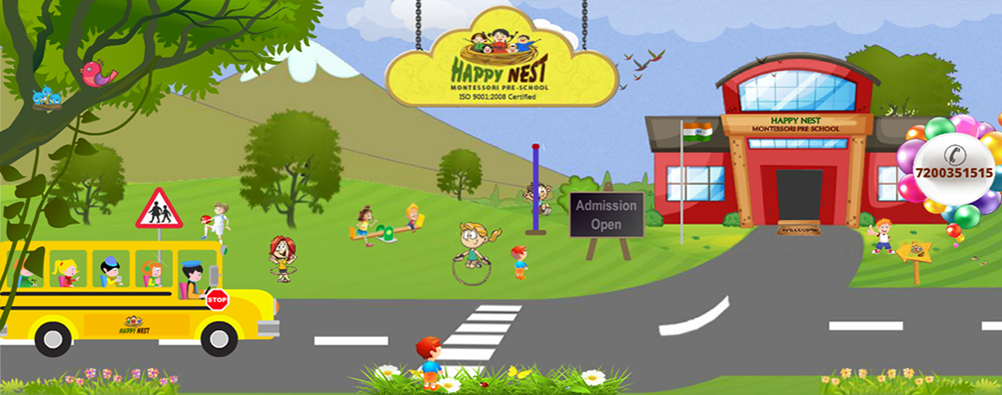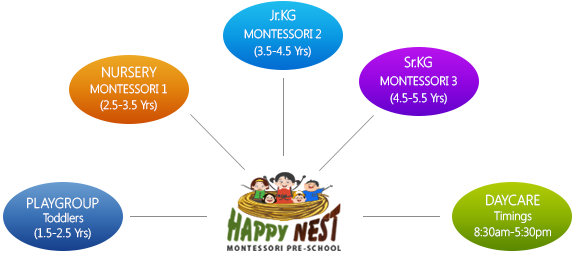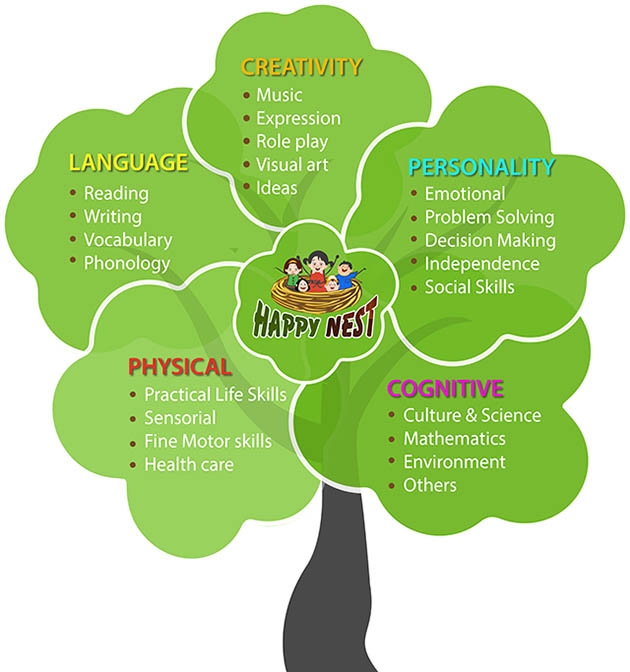

We strongly believe in Montessori Method of teaching for the early age group of children, also adding value to the system related educational aids, socialization aspects and health concepts.


The Montessori Method is an educating approach for children based on the research and experiences of Italian physician and educator Maria Montessori (1870-1952). It arose in the process of her experimental observation of young children given freedom in an environment, leading her to believe by 1907 that she had discovered "the child's true normal nature." Based on her observations, she created an environment prepared with materials designed for their self-directed learning activity.
The environment is prepared to enable the children to become physically independent of the mentors in the classroom. This also enables them to be more decisive and develop the ability to think independently, take decisions and decide things for themselves.
Although activities are prepared with their own developmental aim in mind they also prepare the children for future activities. This indirect preparation is both physical and also abstract cognition. For example, several sensorial materials, prepare the children beforehand for them to introduce Arithmetic, Language, Writing and Geometry.
The order is something that pervades in a Montessori environment. For the small child in the Children’s House the physical order of the prepared environment is obvious, but the order also underlies all of the less tangible aspects of the environment e.g. the consistency of the mentors and their approach, the order of presentation etc. For the older child the social order becomes more important.
The environment will give the child the opportunity to choose from a range of activities that are suitable to his developmental needs.
We ensure that the prepared environment is with child's freedom, to choose, to work for as long as he wants to, to not work, to work without being interrupted by other children or by the constraints of a timetable etc.
Another part of the environment is the formation of a community with at least a three year age range, This allows for children to learn from each other in a non competitive atmosphere and directly prepares the child for living in society and the world.
The environment will allow the child's free movement so that they can exercise their freedom to bring themselves into contact with the things and people in their environment that are required for the development.
The atmosphere and in particular the materials will be prepared in a manner that allows the children to become aware of their mistakes and to it correct themselves so that they realize and understand that it is all right to be wrong and that we can learn from our mistakes.
The materials that we choose for the environment will act as keys to the child's development and we prepare the environment with this in mind. The Montessori materials chosen will be directed by the child's essential developmental needs at each age range.
The role of the mentor in a Montessori environment is to facilitate the child to teach themselves by following their own inner urges to explore the environment. ie. Through the Montessori materials, outdoor areas, garden, and people around-through means of conversation times, circle times, etc.